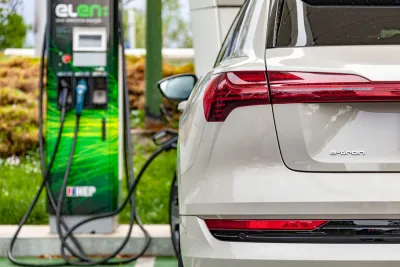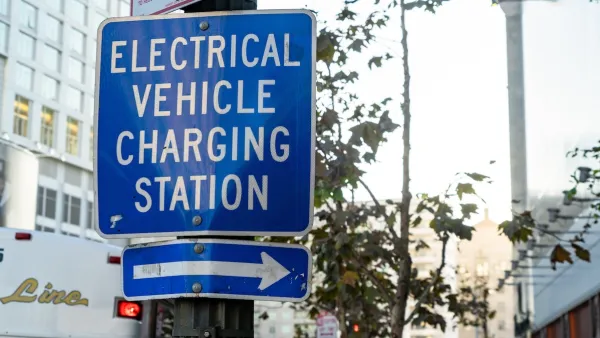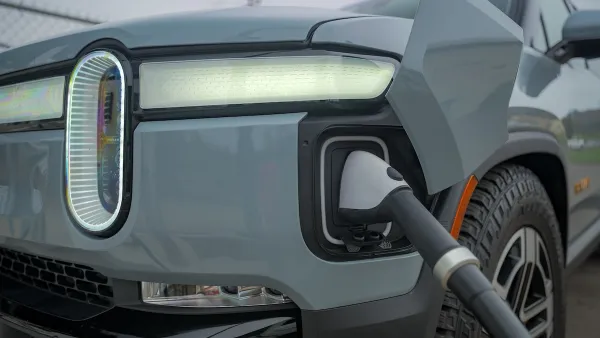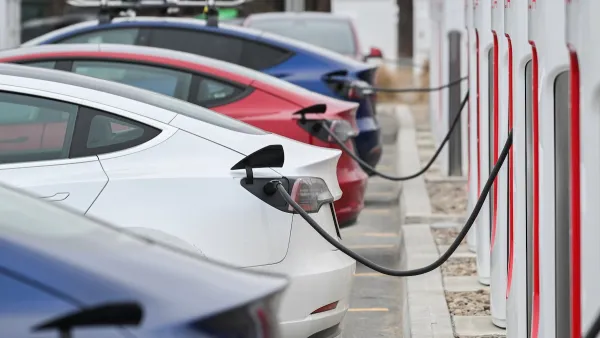The growing popularity of large, heavy SUVS—and the energy needed to produce and operate them—could limit the environmental gains made by electric vehicles.

Experts are warning that the larger size of personal vehicles—even electric ones—poses a risk to the environment, in addition to being more dangerous to pedestrians, writes Kea Wilson in Streetsblog. The warning comes from a European watchdog group, which Wilson points out is notable because cars sold in Europe are generally smaller than U.S. vehicles.
A report called the Green Car Assessment Program rates vehicles on their environmental impact, from manufacturing to tailpipe emissions and charging. “The researchers also controlled for the number of kilometers that vehicle was likely to be driven each year, and offered a free tool for motorists to estimate their cars' unique stats if they drive less than their countries' annual average, or if their vehicles weren't chosen for deeper analysis in this year's rankings.”
When taking into account all the ways a vehicle uses energy, ‘zero emission vehicles’ are, according to the study, “anything but — and large ones, especially, can have fewer environmental benefits than their green marketing campaigns might suggest. Overall, the electric vehicles in this year's dataset only cut between 40 and 50 percent of the greenhouse gas emissions compared to conventional petrol cars, rather than the 100 percent that the famous ZEV label implies.”
As Wilson explains, “any electric car on the road will be roughly 33 percent heavier than its gas-powered equivalent thanks to its heavy battery.” However, “the researchers stressed that Europe's nine percent increase in average vehicle weights on newly sold vehicles over the last ten years was also driven by another factor: the exploding popularity of large SUVs, whose sales increased sevenfold over that period.”
Ultimately, the researchers conclude that “the heavier the vehicle, the more harm it does to the environment and the extra energy required to drive the car.”
FULL STORY: Researchers Are Sounding the Alarm About Heavy EVs — Even in Europe, Where Cars Are Far Smaller

National Parks Layoffs Will Cause Communities to Lose Billions
Thousands of essential park workers were laid off this week, just before the busy spring break season.

Retro-silient?: America’s First “Eco-burb,” The Woodlands Turns 50
A master-planned community north of Houston offers lessons on green infrastructure and resilient design, but falls short of its founder’s lofty affordability and walkability goals.

Delivering for America Plan Will Downgrade Mail Service in at Least 49.5 Percent of Zip Codes
Republican and Democrat lawmakers criticize the plan for its disproportionate negative impact on rural communities.

Test News Post 1
This is a summary

Test News Headline 46
Test for the image on the front page.

Balancing Bombs and Butterflies: How the National Guard Protects a Rare Species
The National Guard at Fort Indiantown Gap uses GIS technology and land management strategies to balance military training with conservation efforts, ensuring the survival of the rare eastern regal fritillary butterfly.
Urban Design for Planners 1: Software Tools
This six-course series explores essential urban design concepts using open source software and equips planners with the tools they need to participate fully in the urban design process.
Planning for Universal Design
Learn the tools for implementing Universal Design in planning regulations.
EMC Planning Group, Inc.
Planetizen
Planetizen
Mpact (formerly Rail~Volution)
Great Falls Development Authority, Inc.
HUDs Office of Policy Development and Research
NYU Wagner Graduate School of Public Service





























